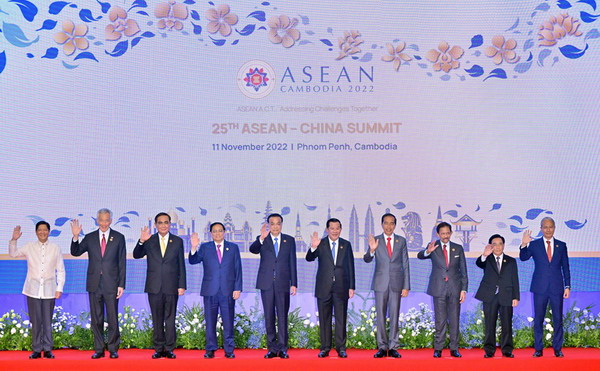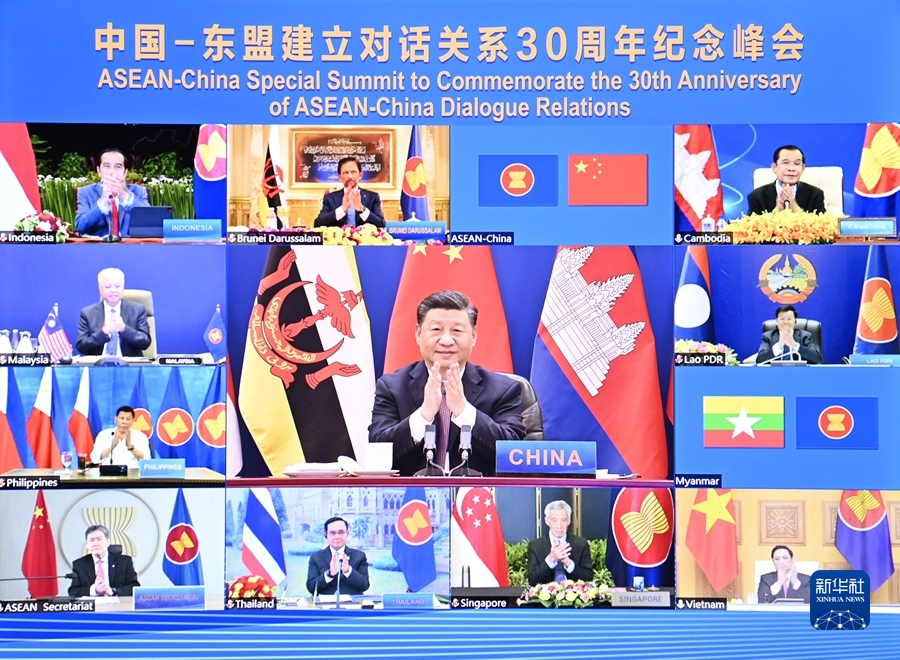|
WEI Ling, China Foreign Affairs University
China and ASEAN are currently engaged in “negotiations” of two security arrangements, Treaty of Good Neighborliness, Friendship and Cooperation between China and ASEAN countries and the Code of Conduct of Parties in the South China Sea (COC). ASEAN will establish the only sub-regional Community in the Asia Pacific by the end of 2015. And China is the biggest emerging and second largest economy in the world. Thus the security arrangements between China and ASEAN will have significant impact on the evolution of the regional order.
The paper argues that the consultation and negotiation of the two documents are part of the trust-building process between China and ASEAN, which formally started with China’s accession to the Treaty of Amity and Cooperation and the signing of the Declaration of Conduct of Parties in the South China Sea (DOC). Such process is more about trust-building than conflict prevention/resolution. The two documents will embody and enhance ASEAN’s norm of cooperative security and China’s norm of developmental security. They will complement the regional security network and co-evolve with the U.S. security alliances and other security arrangements in shaping the regional order.
I. China and ASEAN: efforts toward regional security
Since its establishment in 1967, ASEAN has managed to maintain peace not only among its members, but also with its partners. Its security-community building efforts started with the Treaty of Amity and Cooperation in Southeast Asia (TAC) and were sustained through pragmatic cooperation process in the ASEAN Way of consensus, comfort level and minimum institutionalism.[1] The establishment of ASEAN not only guaranteed peaceful resolution of disputes among its five founding members, but also prevented them from falling into the victims of the bipolar confrontation. In the late 1980s and early 1990s, ASEAN expanded to include all countries in Southeast Asia, engaging those of different political systems in building one community and hence peace becoming an inherent norm. In shaping a larger region, ASEAN has applied an “ASEAN +” institutional structure, played a “soft balancing” strategy among major powers, and socialized outside players in the building of a region toward peace, prosperity and progress.[2]
Despite the general perception that China’s security cooperation with ASEAN lagged behind its economic engagements, China was the first major power outside ASEAN that committed itself to ASEAN way of regional security and China has become increasingly active in regional security cooperation. China was the first major power outside ASEAN that signed TAC, established strategic partnership with ASEAN, and expressed willingness to sign Treaty on the Southeast Asia Nuclear Weapon-Free Zone. In 2002, China signed DOC with ASEAN countries, which has played a significant role in nurturing the habit of maintaining peace and cooperation at sea and laid important foundation for the consultation and negotiation of the COC.[3] At the institutional level, China joined ASEAN Regional Forum initiated by ASEAN in 1994 and has become increasingly active in preventive diplomacy. Entering the second decade of China-ASEAN strategic partnership, China initiated the consultation and negotiation of the Treaty of Good Neighborliness, Friendship and Cooperation with ASEAN countries, proposed China-ASEAN Defense Ministers Meeting, advocated a concept of common, comprehensive, cooperative and sustainable security and supported the “dual track” approach in resolving disputes and maintaining peace in the South China Sea.
II. Locality and security norm
In their efforts toward a secure region, ASEAN and China have developed distinctive ideas and norms of regional security, which are embedded in the local context. Acharya argues that local normative hierarchy is key in determining whose norms matter. For both ASEAN and China, non-intervention is fundamental in their normative hierarchy. Therefore, it is not surprising that ASEAN has transformed the “international” norm of “common security” into local norm of “cooperative security”,[4] that none of the treaties or declarations signed by China and ASEAN have strong legally binding force, and that a collective security institution like NATO was not implanted in East Asia.[5]
Adhering to cooperative security, ASEAN has maximized its security through cooperation within itself and with outside partners. And with greater security, ASEAN can continue to consolidate, expand and upgrade cooperation. “Non-intervention” of internal affairs and separation between regional and domestic security have allowed maximum cooperation among members of diversified cultures and political systems and with inadequate strategic and political trust. And China, by advocating sustainable security, actually is contributing a new element to the regional security norm based on its own experience, that is, developmental security. The basic idea of sustainable and developmental security is that there is no guarantee of security without social and economic development, and hence in the cooperation for greater security, priority should be placed on development.[6] For instance, maritime cooperation for pragmatic benefits is a major part of the DOC. Cooperation and development can also be expected to be key elements of the COC and the Treaty of Good Neighborliness, Friendship and Cooperation. Both treaties can be more institutionalized and more legally-binding than “declarations”. But trust-building is still to outweigh conflict-resolution and the local elements of cooperation and development are likely to remain fundamental.
III. Patchwork, network and evolution of security order
Victor Cha argues that a regional architecture of complex patchwork is emerging in East Asia, which is fluid and inclusive, with all bilaterals, trilaterals and multilaterals threaded together by the U.S. security alliance.[7] However, the East Asian regional architecture is more like fluid and ever-expanding network than patchwork. What threads and connects the nodes in the complex network is not alliance, but norm, norm-defined security arrangements and norm-nurtured identification. China and ASEAN are making progressive efforts in deepening and institutionalizing security cooperation for a more secure region. The consultation and negotiation of the COC and the Treaty are thread-weaving efforts in strengthening the network. Cooperative and developmental security will co-evolve with collective security and “security alliance” in shaping the regional security order. And compatibility and integration of the networking processes depends on agency of all stakeholders in the region.
[1] Amitav Acharya, Constructing a Security Community in Southeast Asia: ASEAN and the Problem of Regional Order, London: Routledge, 2001.
[2] Qin Yaqing, Relations and Processes: Cultural Construction of Chinese International Relations Theory, Shanghai: Shanghai People’s Publishing House, 2012; Wei Ling, “Lesser Agents and International Institutions,” World Economics and Politics, No.5, 2014, pp.85-100.
[3] Wang Yi, “Keynote Speech at Session 20 ‘ASEAN Community: A Major Milestone for Asian Integration’ of the 2015 Boao Forum for Asia,” Boao, 28 March 2015.
[4] Amitav Archaya, "How Ideas Spread: Whose Norms Matter? Norm Localization and Institutional Change in Asian Regionalism," International Organization, Vol. 58, No. 2, 2004, pp. 239–275.
[5] Hemmer and Katzenstein argue that there is no NATO in Asia because the U.S. doesn’t identity itself with Asian countries. However, the local agency is actually the determining factor. See Christopher Hemmer and Peter J. Katzenstein, “Why is There No NATO in Asia? Collective Identity, Regionalism, and the Origin of Multilateralism,” International Organization, Vol.56, No.3, 2002, pp.575-603.
[6] Xi Jinping, “New Asian Security Concept For New Progress in Security Cooperation,” Remarks at the Fourth Summit of the Conference on Interaction and Confidence Building Measures in Asia, Shanghai, 21 May 2014.
[7] Victor D. Cha, “Complex Patchworks: U.S. Alliances as Part of Asia’s Regional Architecture,” Asia Policy, No.11, 2011, pp. 27-50.
|











